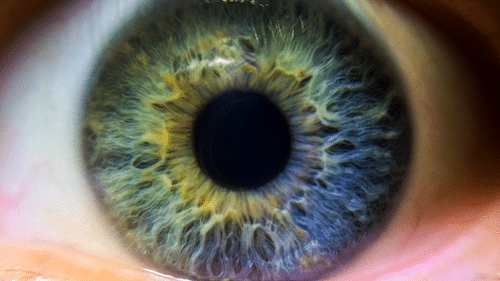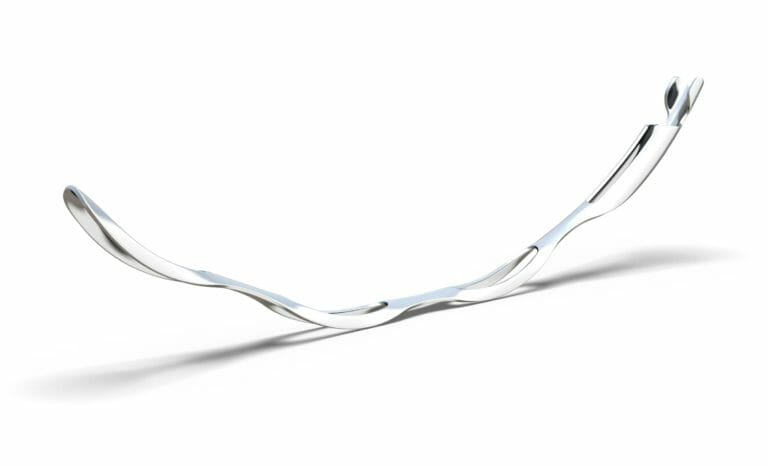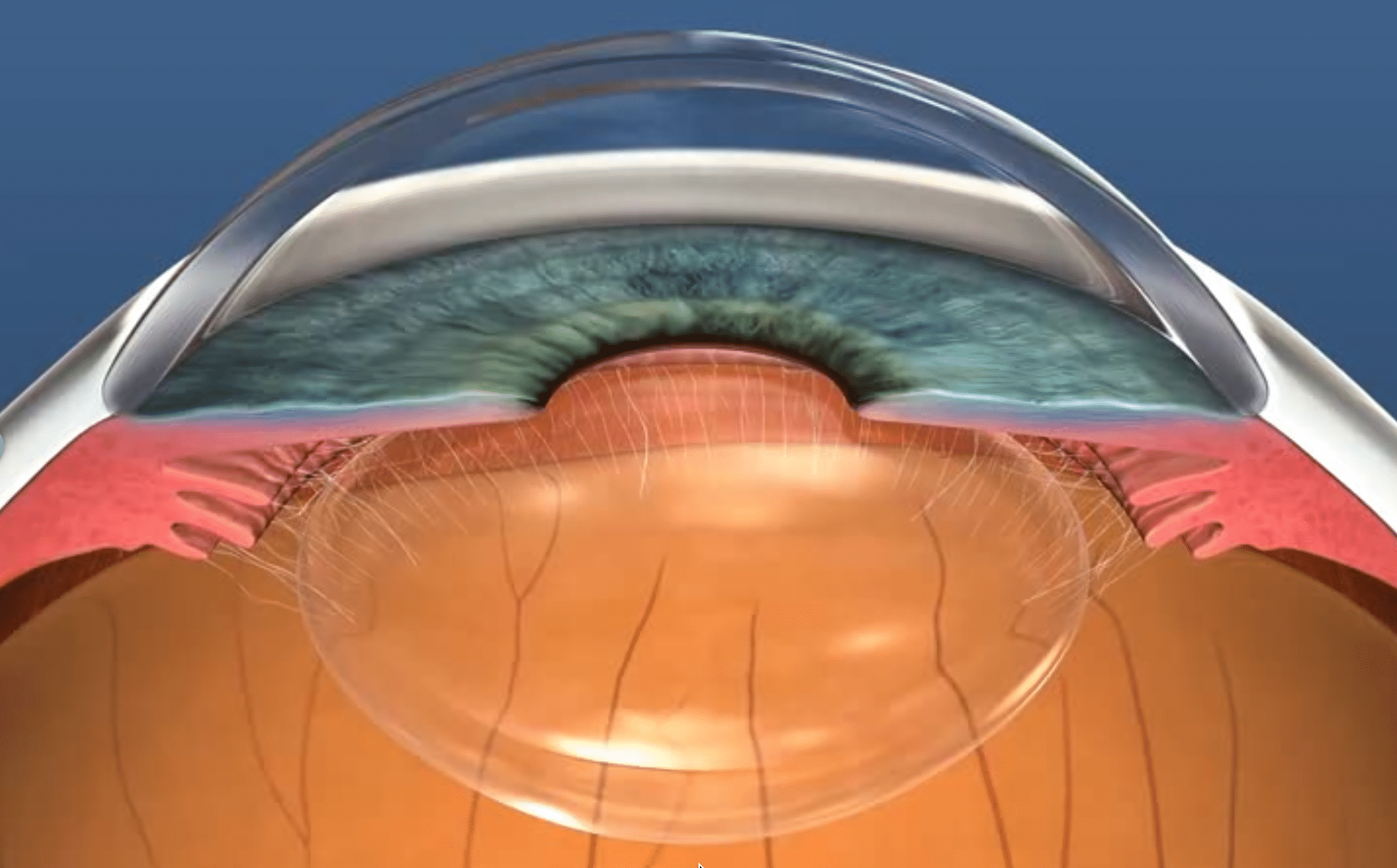
Hydrus Microstent
Implanted during cataract surgery, or by itself, the Hydrus Microstent can reduce eye pressure and may help free you from glaucoma eye drops
Learn moreSmall implant. New freedom.
Help control your eye pressure and possibly eliminate your need for medication with the Hydrus Microstent

What is glaucoma?
Glaucoma is a group of eye diseases commonly caused by an increased pressure inside the eye caused by a buildup of excess fluid. Treatment is aimed at lowering pressure to prevent further vision loss.

Understanding glaucoma
Normal eye
In a healthy eye, a fluid called aqueous flows freely throughout the eye and travels through an internal drainage system.
Glaucoma
If the drainage system is blocked or partially obstructed, the natural pressure in your eye may increase. When eye pressure becomes too high, the optic nerve can become damaged causing blurred vision, and if left untreated, vision loss or blindness.

Delivering a new confidence in glaucoma care
The Hydrus Microstent is a revolutionary new therapy to help manage your glaucoma. It has been proven in global clinical trials to lower eye pressure, and in some patients, eliminate the need for glaucoma medication.
In a large clinical trial, 77% of Hydrus Microstent patients saw a significant reduction in eye pressure and 78% were drop free at 2 years.
Introducing the Hydrus Microstent

What is the Hydrus Microstent?
Roughly the size of an eyelash, the highly flexible Hydrus Microstent is inserted at the time of cataract surgery or by itself to treat glaucoma using microscopic incisions. This less invasive approach allows for fewer complications and faster healing times than traditional glaucoma surgery.
How does the Hydrus Microstent work?
The Hydrus Microstent bypasses the blockage in glaucoma and enhances the eyes natural drainage channels to relieve high eye pressure. Hydrus Microstent reduces eye pressure in 3 ways:

-
Enhancing outflow safely
Hydrus Microstent is placed in Schlemm's canal, a part of the drainage systemic of the eye. Fluid then flows through the Hydrus Microstent and into the eye's natural drainage channels to reduce eye pressure.
-
Expanding the eye's natural fluid pathway
Hydrus Microstent delicately expands Schlemms canal, allowing for enhanced flow through the eye's natural drainage system.
-
Reducing eye pressure reliably
Hydrus Microstent spans a full 90 degrees within the eye. This coverage ensures that fluid reaches the eye's drainage system, which carries fluid from Schlemm's canal to the body's circulatory system and allows pressure in the eye to be lowered reliably.
Managing your glaucoma
It might be easier than you imagined.
Is the Hydrus Microstent right for me?
If you're one of the many people with cataracts and glaucoma, you'll be glad to know that cataract surgery combined with the Hydrus Microstent can correct more than just your cataracts.
In a major clinical study, 78% of all patients were drop-free after cataract surgery combined with Hydrus Microstent insertion at 2 years

Dr Nathan Kerr
Melbourne Glaucoma and Cataract SurgeonHydrus
Advantages NEW- Lowers eye pressure
- Minimally invasive
- Fast recovery
- May reduce need for eye drops
Who may benefit from the Hydrus Microstent?
It is necessary to first undergo an eye examination to determine if you are eligible for the Hydrus Microstent. The Hydrus Microstent is an effective surgical option for many glaucoma patients. If you fit into any of the following categories, you may be a candidate for the Hydrus Microstent:
Open-angle glaucoma
If you have primary open-angle, pseudoexfoliative, or pigmentary glaucoma.
Side effects from medication
If you are intolerant of glaucoma medications, or have difficulty taking them as prescribed.
Failed laser
If you have a history of failed laser trabeculoplasty.
Having cataract surgery
If you are about to have cataract surgery.
Experienced Hydrus surgeon
Dr Nathan Kerr is one of Australia's leading specialists in minimally invasive cataract and glaucoma surgery
book an appointment
Frequently asked questions
Discover how the Hydrus Microstent could help treat your glaucoma.
What is the Hydrus Microstent?
The Hydrus Microstent is a tiny scaffold, about the size of an eyelash, that is inserted into the main drainage channel of the eye to help lower eye pressure and reduce the need for medications. It is so small you will not see or feel it after the procedure. The Hydrus Microstent is made from a super-elastic alloy of nickel and titanium. This material will not cause an allergic reaction and has been used in over a million medical implants. It will not set off airport scanners and is safe if you need to have an MRI scan.
How does the Hydrus Microstent work?
The Hydrus is best suited to patients with mild to moderate open-angle glaucoma taking glaucoma drops who are undergoing cataract surgery and wish to reduce their need for glaucoma medications. The Hydrus is not suitable for advanced glaucoma or where the natural drainage system of the eye is damaged.
What are the benefits of the Hydrus Microstent?
The Hydrus helps to reduce the pressure in the eye and may reduce the need or dependence of eye drop medications in patients with mild to moderate glaucoma. Following combined Hydrus Microshunt insertion and cataract surgery 7 out of 10 patients were medication free at 2 years after surgery compared to only 3 out of 10 patients who had cataract surgery alone. The Hydrus Microstent will not cure your glaucoma, reverse any damage already caused by glaucoma, or bring back any lost vision.
What does the Hydrus Microstent operation involve?
The Hydrus Microstent is implanted at the end of cataract surgery via the same micro incisions needed for cataract surgery, meaning no additional incisions are necessary. The procedure can also be performed by itself, without cataract surgery. A special injector is used to insert the device into the main fluid drainage canal of the eye, called “Schlemm’s canal”. The operation is usually performed under a local anaesthetic, meaning that you are awake but your eye is numb so you will not feel anything.
How soon will I recover after the Hydrus Microstent?
The Hydrus Microstent will begin very quickly and Dr Kerr will advise when you can reduce or stop taking your glaucoma drops in the operated eye. Any drops you use in your other eye must be continued as normal. Following cataract surgery, you will be given new anti-inflammatory eye drops to use for 4 weeks to prevent inflammation. Most people take a few days to a week off work after surgery, however the length of time will depend on the nature of your work.
What are the risks?
It is normal for there to be a small amount of bleeding inside the eye during the operation but this resolves within a few days. There is a risk the stent could become blocked or come out of position, however this is rare. In some cases the procedure may not lower eye pressure or its effect may wear off with time. If the stent fails to lower your eye pressure it will not create any additional harm to your eye. However, you may need to restart your glaucoma medications or have further procedures to control your eye pressure.
Are there any alternatives?
The iStent, iTrack, and XEN are alternative minimally invasive procedures that can be performed at the time of cataract surgery to lower eye pressure in patients with primary open angle glaucoma. Non-surgical alternatives include continuing to use eye drops to lower eye pressure or a laser procedure called selective laser trabeculoplasty.
If you liked this page, please share it on social media to let people with glaucoma know about the Hydrus Microstent.
See Dr Nathan Kerr
Dr Kerr is one of only a handful of surgeons performing this procedure in Australia
Make an appointmentBook today


